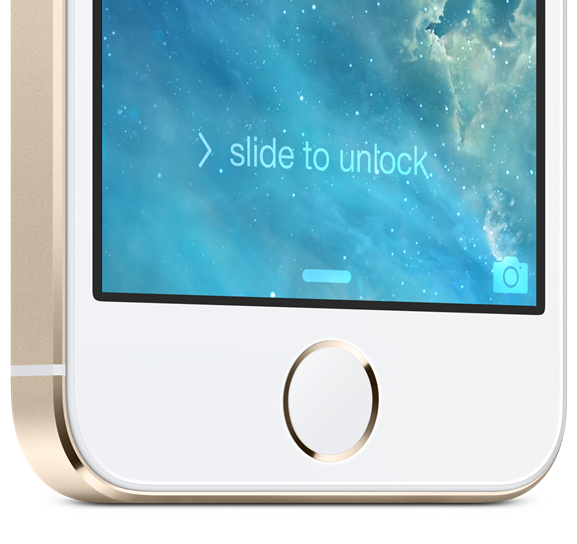When Apple introduced the iPhone 5s at Tuesday’s Cupertino event it didn’t come as any surprise that the new hardware included biometric detection embedded within the home button. The inclusion of this technology, officially called Touch ID, had long been speculated about before Tim Cook took to the stage and had also been all but confirmed by the discovery of biometric framework logs in a teardown of iOS 7. iPhone 5s Touch ID is definitely a polarizing feature but Apple has now released some additional information regarding the technology that should answer a few questions.
A lot of potential consumer questions regarding the biometric technology has been privacy and security centric with concerns over what Apple actually does with the fingerprint data that we will be providing to the device. In an attempt to lay concerns to rest, an Apple spokesperson has reached out to The Wall Street Journal to alleviate fears and state that Apple will not actually be storing images of the user’s fingerprint. To allow the whole process to work effectively the device will instead capture and store the necessary data only from the fingerprint. And this data is encrypted, stored securely on the new A7 hardware chip. It’s never available to any other software, never stored on Apple’s servers, never backed up to iCloud.
The decision to store and use only fingerprint data means that if anyone actually manages to bypass the encryption and security protocols that are part of the device then it would be extremely difficult for them to rebuild the user’s fingerprint for malicious use. The inclusion of Touch ID on the iPhone 5s is as much of a time-saving feature as it is security based. The embedded fingerprint scanner will not only allow iPhone owners to unlock the device with a simple tap of the home button but also authorize payments and downloads through Apple’s various digital stores such as iTunes, App Store, iBooks.
Apple has also clarified again that currently Apple is not allowing third party developers to make use of the Touch ID technology in their apps. But this may change in future through a software update.
It has also come to light that anyone using the Touch ID sensor of the device will also be required to create a backup passcode on the phone that would be used as an additional level of security. If the device is rebooted or hasn’t been unlocked for over two days then the passcode is required to gain access to the device.
Only that passcode (not a finger) can unlock the phone if the phone is rebooted or hasn’t been unlocked for 48 hours. This feature is meant to block hackers from stalling for time as they try to find a way to circumvent the fingerprint scanner.
The inclusion of any new technologies designed to make authentication easier for the user will undoubtedly raise security concerns but it’s great to see Apple issuing a response so promptly.
The new iPhone 5s will be available for sale through Apple’s Retail and online stores on Friday 20th September with availability initially in nine countries.
You may also like to check out:
You can follow us on Twitter, add us to your circle on Google+ or like our Facebook page to keep yourself updated on all the latest from Microsoft, Google, Apple and the web.

